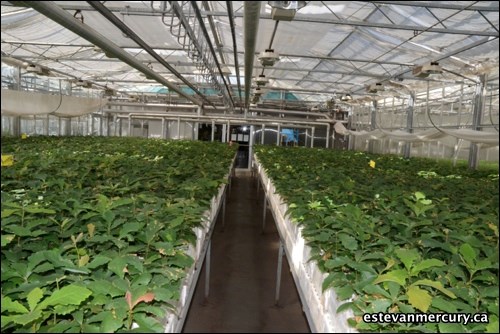With the impending decommissioning of the Agro Forestry Development Centre, often referred to as the Forestry Farm or Shelterbelt Centre, in Indian Head, the question has been raised as to whether or not the Shand Greenhouse program could fill some of the gaps.
Could the greenhouse attached to the Shand Power Station meet the challenge of providing more trees and shrubs for the Prairies by 2014?
The answer is no, but it's a no that is shaded by a number of variables and alternatives.
First of all, the federally funded and managed forestry farm has a different mandate in terms of experimental species and a very widespread sphere of influence. There is also the possibility that the forestry farm and all its assets may still be taken over by a private concern or a co-operative. Or it might simply be shuttered since the federal government has expressed no interest in maintaining it as a source of free shelterbelt greenery for Prairie farmers past this next growing season.
Filling the breach would be a huge undertaking and one that would be far too immense for the Shand operators since the local greenhouse is being operated and managed by SaskPower as a voluntary gift to the province. That would require a whole shift in their corporate considerations and mission statements and a huge budget consideration going forward.
But the expected closure of the Indian Head tree farm has certainly impacted the number of requests being fielded by the greenhouse team.
Shand's acting manager Shelly Heidinger points out that Shand is not mandated to compete with commercial forestry operations, but the requests for young trees that usually number 280 to 315 per year have skyrocketed to over 600 this year. Counterparts at Indian Head, where there will be at least one more growing season before being shut down or taken over by some other entity, have also been more robust than in the past.
Heidinger said that is a clear indication the need is still there.
"But we're not here to step on the toes of private growers," Heidinger said.
Debbie Nielsen, manager of environmental programs for SaskPower, said the Indian Head Development Centre and Shand have different objectives, but in some instances they share the same type of clients.
She noted that the Shand staff and Indian Head team communicate frequently, but for Shand to try to fill the gap that will be left with the closure of the forestry farm is a non-starter.
She pointed out that Shand provides about 500,000 seedlings per year whereas the Indian Head farm will produce between two and five million young trees or shrubs annually.
Heidinger said the Indian Head operation gave Shand some storage and refrigeration space in the past, so she doesn't know what they'll be able to do in the future once that operation closes.
Increasing production significantly would be a big challenge for the current staff of six or seven full-time people, which increases during peak periods. Shand can produce seedlings twice a year on the current schedule and while they might be able to pump out a few thousand more, there is no chance under the current set-up to provide a viable alternative to Indian Head.
The requests usually filled out by Shand are for traditional blue spruce, native poplar and caraganas.
Heidinger also pointed out that Indian Head has had a proud 110-year tradition of experimenting with and producing various types of trees while Shand has a more limited 20-year history.
"We might be able to stretch it a bit over 500,000, but Shand is already close to capacity," said Nielsen.
She said the greenhouse came about as a business and demonstration plan for SaskPower to illustrate how waste heat can be utilized for an environmental/sustainable program. This has been done.
"It's a biodiversity project and it's a voluntary effort. We look at it from an environmental perspective and it has been used for economic growth in the province, but there is a lot of value on the commercial nursery side too. We have to consider the interests of the private sector and the marketplace while still doing what we have to do for our mandate, and we will continue to do that," Nielsen said.
"Our volume right now makes sense with our environmental impacts, our tree production, our educational programs. It's entirely funded by SaskPower and we connect to our customers who can come to us for at least some pieces for a project. In the past we have worked closely and co-operatively with the agri-forestry program at Indian Head," Nielsen added.
"But I believe the government is still looking at what they want to do with agri-forestry, and it's obvious the demand is still out there for shelterbelt projects," Nielsen said.
In the meantime, Shand will provide products for their original mandate, which is to provide mitigation plants for such places as the Rafferty valley, reclamation programs for the mining operations, shelters for wildlife habitat and other non-commercial promotions such as farmland where, she noted "we've done some building in their backyard, so we give back and restore."
Shand will be called upon to provide as many as 25 species at any given time, according to regional needs ... species that will grow within the province.
Either way you look at it ... from the agro-forestry or Shand perspective, it's a fine, green legacy being left behind.




